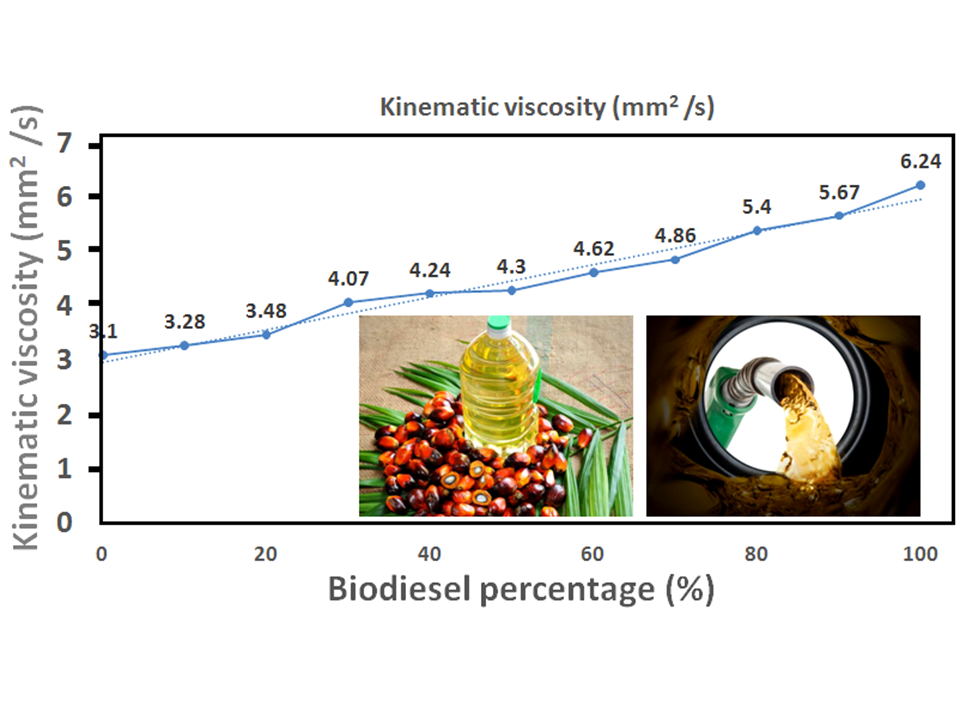Chemical Science & Engineering Research
Title
Properties of Blend Local Palm Biodiesel with Diesel Fuel
Authors
Nworu Jerome Sunday,*a Enemose Edith Ajirioghene,a Asionye Ezenwa Isdoreb and Eze Nkechinyere Oliviac
aDepartment of Chemistry, Nigeria Maritime University, Okerenkoko, Delta State, Nigeria
bDepartment of Marine Environment and Pollution Control, Nigeria Maritime University, Okerenkoko, Delta State, Nigeria
cDepartment of Industrial Chemistry, Ebonyi State University, Abakaliki
*Corresponding author E-mail address: jerome.nworu@nmu.edu.ng (J.S. Nworu)
Article History
Publication details: Received: 11th February 2020; Revised: 30th March 2020; Accepted: 01st April 2020; Published: 05th May 2020
Cite this article
Nworu J. S.; Enemose E. A.; Asionye E. I.; Eze N. O. Properties of Blend Local Palm Biodiesel with Diesel Fuel. Chem. Sci. Eng. Res., 2020, 2(4), 1-5.

Abstract
Biodiesel and diesel could be advantageous and disadvantageous in their respective terms, blending them would yield a fuel with intermediate properties which may improve the combustion and emission characteristics of neat palm biodiesel and thus it is very useful as a fuel in a diesel engine. This study has established relationships between the percentage of palm biodiesel blended with diesel and the properties like density, kinematic viscosity, fire point and flash point. The vegetable oil considered for the experiment was palm oil, which was obtained from commercial source. The feedstock was then converted to methyl esters by the process of transesterification. Ostwald’s U-tube glass viscometer was used to determine the kinematic viscosity (at 38℃) of each sample prepared. Density of the blends at a temperature of 38℃ was measured using a pycnometer of 25 mL capacity. Cleveland’s open cup apparatus was used to determine the flash and fire points of the prepared samples. Analysis was carried out for three separate determinations. The kinematic viscosity of the blends ranges from 3.10 – 6.24 mm2/s which is in range with the specification made in ASTM D6571. The difference in the densities of the blend palm biodiesel is not highly appreciable as the difference between the density of PBD0 and PBD100 is 0.049 gm/cm3. Neat palm biodiesel PD100 is found to have flash point of 161ËšC, which does not satisfy the ASTM D93 standards according to which the maximum limit is 130ËšC. The fire point of the blend increases with increase in the biodiesel percentage.
Keywords
Palm biodiesel; Diesel fuel; Blend Biodiesel; Viscosity; Density; Flash point; Fire point